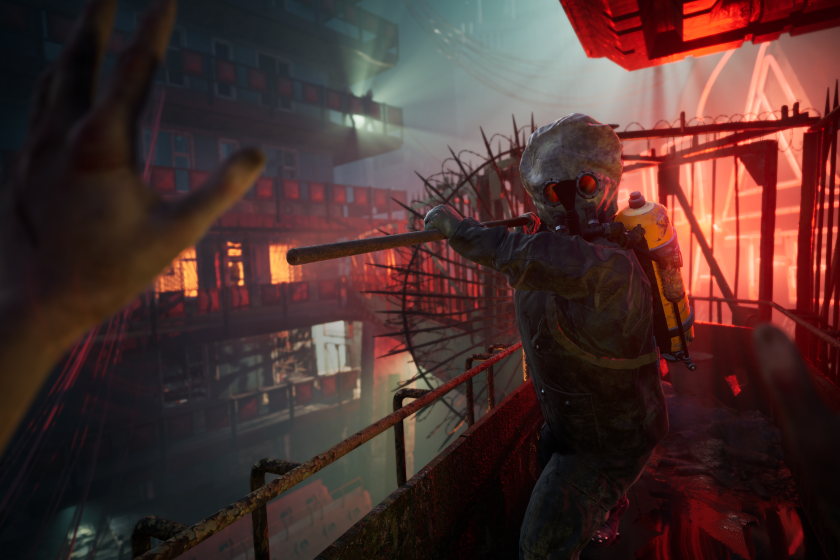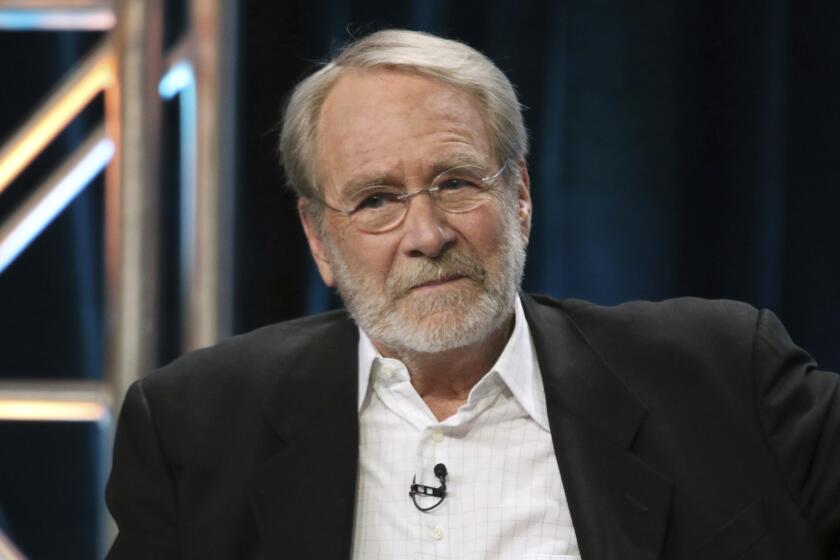When a Big Arcade Game (and Its Violence) Go Home
“Mortal Kombat” features such characters as Johnny Cage, who slays foes by decapitating them with a spectacularly bloody uppercut; Kano, who rips still-beating hearts from his victims’ chests; Sub-Zero, who yanks off his enemies’ heads--with their spines attached; and Scorpion, who shoots spears into his opponents’ throats, then reels them in with attached ropes so he can pummel them silly.
No, “Mortal Kombat” is not some low-budget action film currently trying to get its NC-17 rating changed to an R. It’s the country’s most popular arcade video game--and on Monday, “Mortal Monday,” it’s coming to a home game system near you.
The game is expected to duplicate its success in the arcades and become one of the year’s most popular home games--more than 2 million units will be shipped initially, and its maker, Acclaim Entertainment, expects to sell 4.5 million copies of the game in all, spread throughout the different game formats: Super Nintendo, Sega Genesis, Nintendo’s Game Boy and Sega’s Game Gear. Prices will range from approximately $30 (for Game Boy) to $65 (for Super Nintendo and Sega Genesis).
But industry observers believe that number could be terribly modest. “There are probably something like 40, 50 million video game systems in the U.S. actively in use and an equivalent number worldwide,” said Lee Isgur, a partner at the San Francisco investment firm Volpe, Welty and Co. “If you take that and look at what kind of penetration occurs in the movie and music industries--big hits do about 10%. So if you have 100 million households actively using games, the potential could be 10 million units on the upside extreme. But there’s a possibility it could turn out to be like Michael Jackson’s ‘Thriller,’ which had 25% penetration of the installed base.”
To sell the game, Acclaim is spending a company record high $10 million on a worldwide ad campaign that includes national television advertising. Nonetheless, company officials declined to be interviewed for this story.
“Mortal Kombat” is a martial-arts fighting game in which players assume the role of one of seven warriors who battle the other six--and a mirror image of him- or herself--as well as a four-armed monster named Goro and an evil overlord named Shang Tsung against a variety of exotic backdrops.
Incineration, impalings and dismemberment figures prominently in the arcade version--which is actually fairly standard-issue fare for arcade games. “Mortal Kombat’s” difference is that instead of animated characters, it features digitized reactions of human actors smacking the bejabbers out of each other, offering added realism.
“I’ve seen games that are far worse,” says LeeAnne McDermott, editor in chief of GamePro magazine. “The attraction to this is the digitized characters--they look quite real. The blood isn’t so realistic. The latest home version of ‘Splatterhouse,’ ‘Splatterhouse 3,’ has lots of blood and gore and dismembered body parts.”
For the home versions of “Mortal Kombat,” the human actors are retained, though the violence has been toned down. Nintendo and Sega Genesis, however, have differing philosophies when coping with the issue of video game mayhem.
Nintendo’s systems have sanitized the killings (euphemistically referred to as “finishing moves”). For example, Sub-Zero won’t be seen dangling any loose spines; he’ll freeze victims and reduce them to ice cubes.
According to Perrin Kaplan, corporate communications manager for Nintendo of America, the company has very specific guidelines that don’t “allow for certain kinds of games to make their way to the store shelf. It’s not infrequent that we’ll get a game from a licensee and send it back with a list of changes that have to be made.”
“The arcade version did not meet our guidelines,” she continued. “Our games have no blood or excessive gratuitous violence, and Acclaim had to work to make the game meet our guidelines. Quite a bit needed to be changed.”
McDermott said that Nintendo’s efforts at making the game more palatable may backfire against the company.
“What they’re trying to do is stick to the certain standards for violent content that they’ve set,” she says. “The good side is, they’re taking out the things that are potentially offensive to some people. The downside is, if someone is looking to buy the same game they loved in the arcade, this is not the same game. The average 15-year-old gamer will want it to be as authentic as possible, and if he has both systems, he will choose to buy Sega.”
An editorial in Electronic Gaming Monthly was even harsher on Nintendo. Editor Ed Semrad railed in the September issue, “ . . . no matter how much you ‘sanitize’ the game, it still involves killing people, some of them women. And I bet there isn’t an 8 year old in the country who doesn’t know the real premise behind the game. . . . So what have you accomplished, Nintendo? Not a lot, other than make everybody unhappy.” Of course, the magazine is aimed at vidgame enthusiasts, not parents.
“If that’s not the game they want to play, they know where they can get the original game,” replied Kaplan. “A lot of consumers depend on Nintendo for having its seal of quality. Even though we may be potentially losing revenues by altering the game, we think it’ll be popular.”
Even so, Kaplan admitted that “Mortal Kombat” pushes the envelope in terms of Nintendo’s guidelines. “That is the limit of what you’ll see in a Nintendo game.”
Sega Genesis, on the other hand, sensitive to mounting criticism that video games have become too violent, has programmed its game cartridge so that it can be played in two different modes. The basic game is the toned-down, bloodless version; the other, with blood and grisly deaths, is accessed by a special code. Also, last May, Sega began voluntarily rating its games--GA (general audiences), MA-13 (mature audiences--parental discretion advised) and MA-17 (not appropriate for minors).
Sega has rated “Mortal Kombat” MA-13. “They never specifically issued criteria for the ratings system,” says McDermott. “No one knows what an MC-17 is, because we haven’t seen one. (Sega) is not going to make a secret of the code (to play the bloody version). They’d have to rate the game based on the entire content of the product, and that is part of the game, so this apparently is considered safe fare for teen-agers.”
Ellen Beth Van Buskirk, spokeswoman for Sega Genesis, said that an independent group rates the games and that Sega does not dispute its ratings. “The stronger the reality in the good-vs.-evil confrontations, the higher the rating,” she said, adding that the limited visual capacity of the average 16-bit computer game probably would ensure that no game in the Sega Genesis format would be rated MA-17.
“We don’t have a lot of experience in the MA-17 area,” Van Buskirk said. “Those games would have complete adult narrative, the violence is very realistic. Those games would probably come in the Sega CD-Rom format, because there’s a major difference in the realism between that and the images on the digitized, 16-bit home games.”
(Only one Sega CD-Rom game has an MA-17 rating--”Night Trap,” a controversial vampire game that has drawn protests from various women’s organizations for its graphic depiction of young women having their blood drained from their bodies.)
More to Read
The biggest entertainment stories
Get our big stories about Hollywood, film, television, music, arts, culture and more right in your inbox as soon as they publish.
You may occasionally receive promotional content from the Los Angeles Times.






